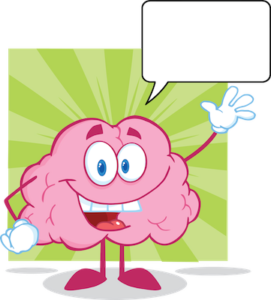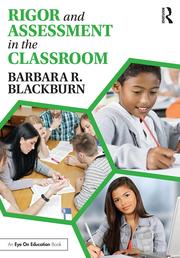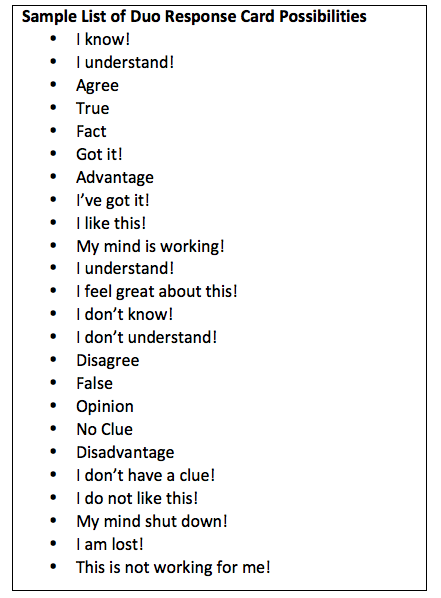8 Flexible Strategies for Formative Assessment
 By Barbara Blackburn
By Barbara Blackburn
Formative assessment is a hot topic in education today. A Google search returns over 11 million hits for the two-word phrase, and nearly four million for “formative assessment strategies.” That’s where I want to focus our attention in this post.
I strongly believe that if we are going to truly support our students to higher levels of success and achievement, we must continually assess their learning in our everyday classroom settings – and use that information to plan our future instruction. How do we do that? Let’s take a look at some ideas.
Formative assessment has been defined as “the frequent, interactive checking of student progress and understanding in order to identify learning needs and adjust teaching appropriately.” (Source)
According to Shirley Clarke in Outstanding Formative Assessment, it’s the most powerful educational tool for raising achievement. Clarke bases her conclusion on the work of John Hattie, who in his Visible Learning research synthesized over 900 meta-analyses of studies in an effort to determine what educational practices are most effective in helping students learn.
Let’s look at five specific actions related to formative assessment. An effective strategy, in Hattie’s system, is identified by an effect size of more than .4. Each of these practices exceeds that benchmark:
Integrating formative assessment into your instruction does not have to be difficult. Let’s look at eight strategies that work in any classroom.
Response Cards
Response cards are a practical strategy to see how much students understand about your content. The easiest way to use them is to give students a card with one possibility on the front and another one on the back.
From: Chapman, C., & King, R. (2005). Differentiated assessment strategies: One tool doesn’t fit all.
Invent a Quiz
Another way for students to demonstrate understanding is to create their own quiz about the content. Ask them to write 5 to 10 higher order questions (you may need to give them question starters). Then have them answer 1 or 2 of the questions.
 Create Your Own!
Create Your Own!
You can also be creative in asking students to demonstrate understanding. Students could create comic strips, podcasts, videos, blog entries, Twitter feeds, or fake Facebook pages to show you what they know. As a bonus, these are fun and motivating for students.
You’ve Got Mail
At Edutopia in Dipsticks: Efficient Ways to Check for Understanding Todd Finley recommends using “You’ve Got Mail.” As he describes it,
Each student writes a question about a topic on the front of an envelope; the answer is included inside. Questions are then “mailed” around the room. Each learner writes his or her answer on a slip of scratch paper and confirms its correctness by reading the “official answer” before she places his or her own [initialed] response in the envelope. After several series of mailings and a class discussion about the subject, the envelopes are deposited in the teacher’s letterbox.”
Assume the Identity
Another option is to ask students to assume the identity of a character in a novel or story, a scientist, a historical figure, or the holder of a job, such as nurse. They research the person and craft a 2 to 5 minute monologue to perform. They must also be prepared to answer questions from the class, which requires them to demonstrate a high level of understanding. Costumes optional!
Screencasting

The Brain’s Speech Bubble
Carolyn Chapman and Rita King in their book Differentiated Assessment Strategies; One Tool Doesn’t Fit All recommend an activity called The Brain’s Speech Bubble. It’s a think-aloud activity with a memorable prop. The goal is for students to practice doing “self talk,” a great strategy for self-assessment. They are learning to bring their “inside thinking” outside and examining it (metacognition) by giving it voice.
► Make a large colorful speech bubble.

► Each time the person tells his or her thinking for a step, the bubble is held directly above the speaker’s head (perhaps by another student – the Bubble Master). The speaker stands beneath the Brain’s Speech Bubble as they verbalize their brain’s thinking process for the class.
► The speaker moves away from the speech bubble when not voicing his or her thinking to the class.
► Perhaps the problem is a math word problem like this:
2/3 of my students play the piano.
1/2 of the students who play the piano also play the violin.
1/4 of those students also play the flute.
What fraction of my students play all three instruments?
Have the student think through the problem solving, step by step. If the student is stumped, the speech bubble can be passed to another student who will share their thinking.
You can see how these performances (which you can adapt to fit your needs) will provide information about individual and group understanding that can be used to target instruction and strengthen lessons. It’s an interesting way for students to demonstrate their thinking as well as interact with the class and sharpen their speaking skills.
Wall of Knowledge
Angela Stockman, on the blog Brilliant or Insane, describes Add a Brick to the Wall of Knowledge. She recommends creating a bulletin board and giving students paper bricks. Ask them to write about what they have learned and place (or staple) their bricks on the wall throughout the year. You could also give students cardboard boxes, and they could write new learning on the different sides of the box. Stack the boxes together to create a wall.

A nationally recognized expert in the areas of rigor and motivation, she collaborates with schools and districts for professional development. Barbara can be reached through her website or her blog. Follow her on Twitter @BarbBlackburn.



 Create Your Own!
Create Your Own!
































